Oil Terminal Department
We support industry and livelihood in Hokkaido by providing a stable supply of petroleum products.
Tomakomai Terminal
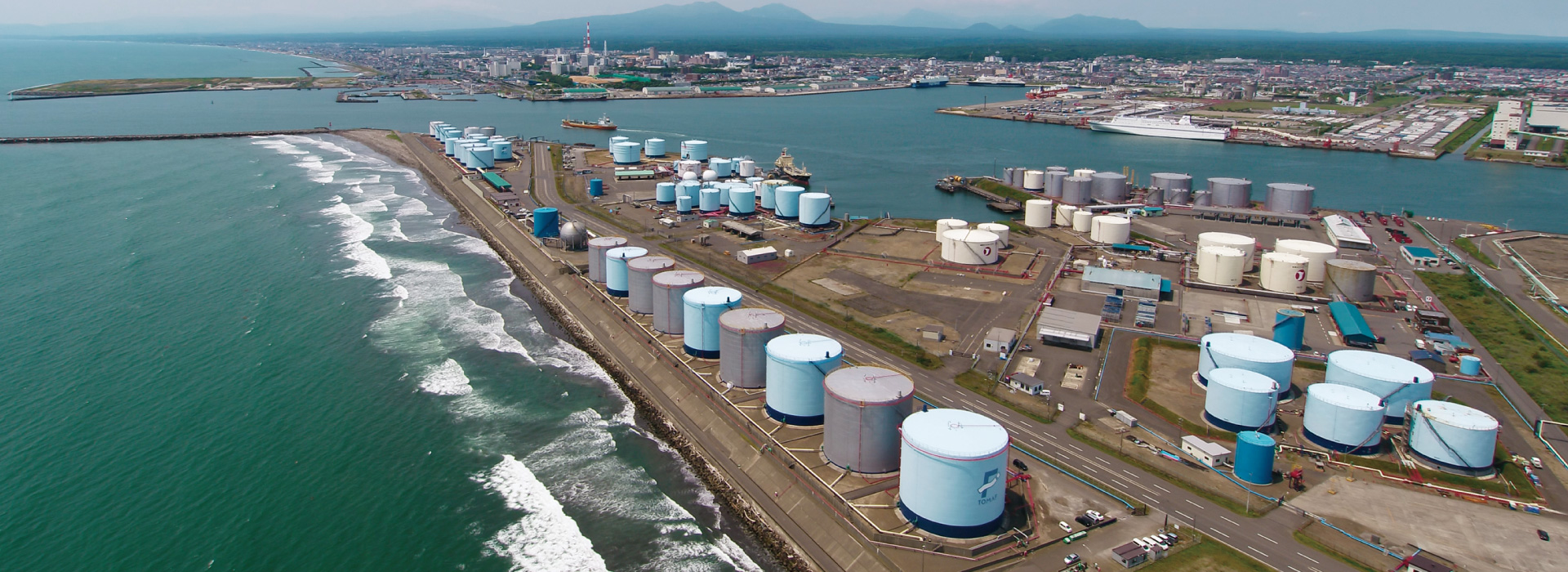
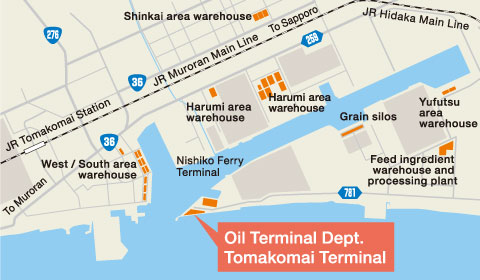
Ishikari Terminal
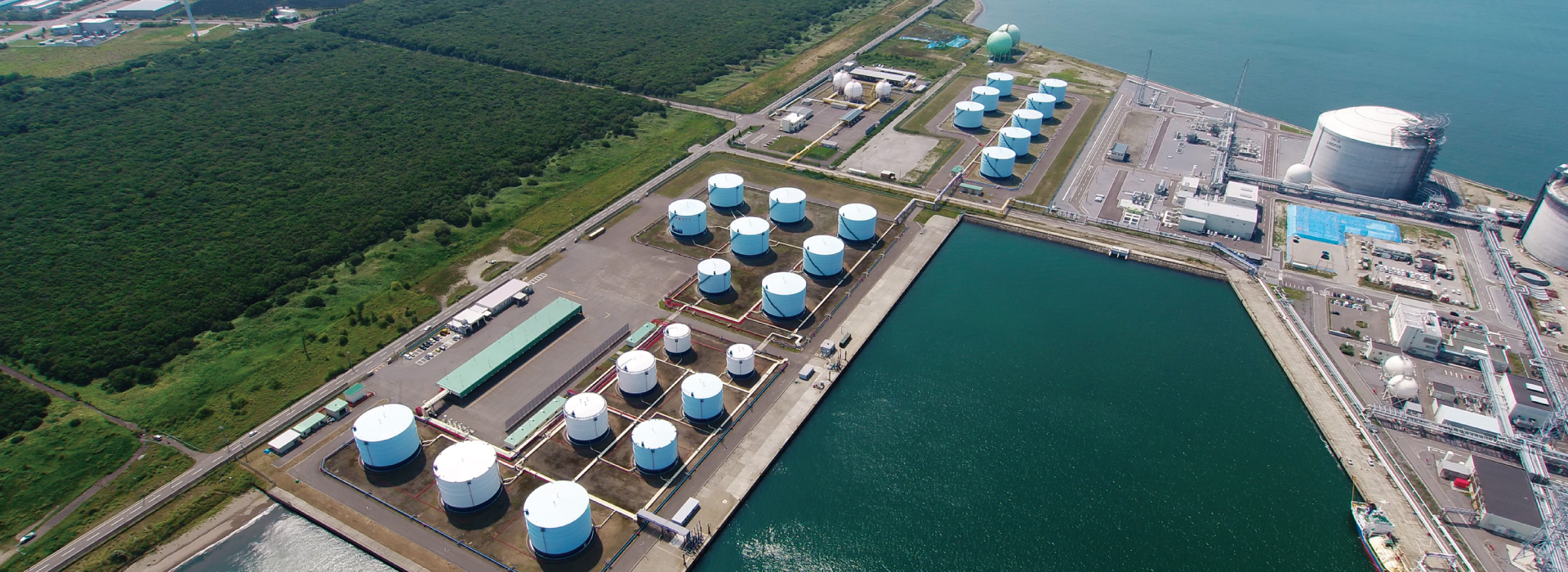
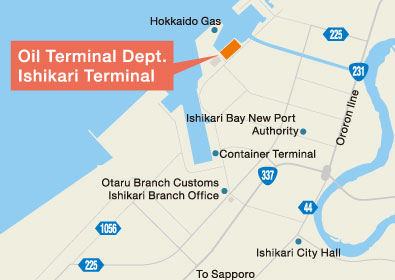
Supporting the livelihood of Hokkaido at an optimal location
The kerosene for heating consumed in the Sapporo area accounts for about 60% of the demand in Hokkaido. We have an oil terminal in Tomakomai, which is about 1 hour by car from Sapporo, and one in Ishikari, which is about 30 minutes by car from central Sapporo. Even if road conditions worsen in the winter, kerosene is sure to be shipped from either Tomakomai or Ishikari, helping to support the livelihood of many people.
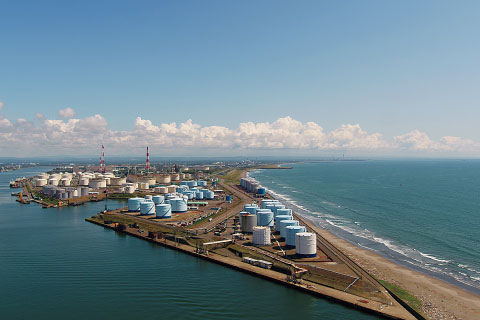
Meeting various needs with the highest class facilities in Hokkaido
As our oil terminal is for shared use, it is used by many customers regardless of the line of oil refinery and plays a role in the stable supply of energy in Hokkaido. Both Tomakomai and Ishikari Terminals are adjacent to the coast and have private berths, with 55 oil storage tanks in Tomakomai and 25 in Ishikari, enabling us to provide efficient receiving and shipping, and storage and transportation services.
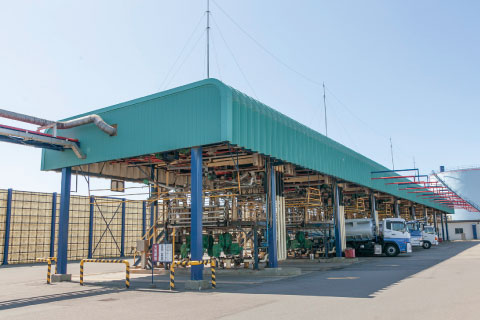
Thorough quality control with extensive knowledge and experience
We handle more than 10 types of petroleum products, including gasoline, diesel oil, heavy oil, ammonia, ethylene glycol, and kerosene, which is essential for heating in Hokkaido. Since different petroleum products require different methods of management, to ensure quality control, our expert staff carry out flash point and moisture inspections with the help of machinery, in addition to visual and odor inspections.
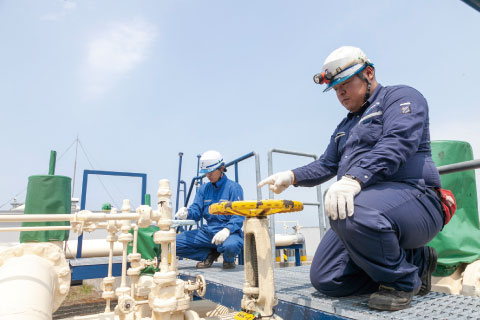
Sure measures for disaster prevention and BCP
Disaster prevention is the greatest mission for businesses that deal with petroleum products. We have organized a joint disaster prevention team in cooperation with surrounding businesses at the Tomakomai Terminal, and an independent disaster prevention team that at the Ishikari Terminal, both employing a 24-hour disaster prevention system. Both terminals also have emergency power generators and a crisis management system that ensures the logistics functions are not disrupted even during a blackout due to a disaster.
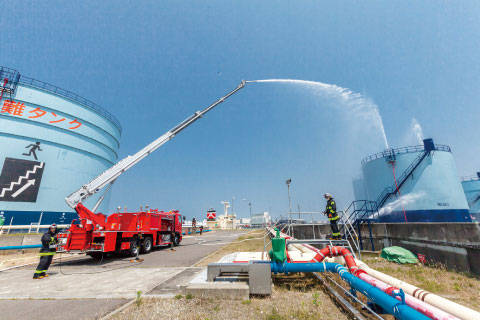
Facility Overview : Tomakomai Terminal
Moorage/unloading facilities
〈Private berths〉
-7.5m×130m(can accommodate 6,000 DWT) ×2
-5.5m×124m(can accommodate 2,000 DWT) ×1
〈Dolphins〉
-7.0m×130m(can accommodate 5,000 DWT) ×2
〈By marine loading arm〉
Gasoline, kerosene, diesel oil, type-A heavy oil, propane, ammonia
〈By hose〉
Jet fuel, asphalt, ethylene glycol
Oil storage facilities
- Oil storage tanks:
- 55 units
299,264kl
- LPG tank:
- 1 unit
950t
- Ammonia tanks:
- 2 units
1,100t
- Asphalt tank:
*41 bonded warehouses - 1 unit
3,800t
Lorry shipping facilities
16 stages, 36 lanes
(Including 2 lanes exclusively for asphalt, 3 lanes exclusively for LPG, and 1 lane exclusively for ammonia)
Dangerous goods warehouses
2 bldgs 873㎡
Facility Overview : Ishikari Terminal
Moorage/unloading facilities
〈Private berths〉
-7.5m×140m(can accommodate 6,000 DWT)×2
-7.5m×140m(can accommodate 5,000 DWT)×1
〈By marine loading arm〉
Gasoline, kerosene, diesel oil, type-A heavy oil
Oil storage facilities
- Oil storage tanks:
*19 bonded warehouses - 25 units
206,840kl
Lorry shipping facilities
10 stages, 20 lanes(Including 2 lanes exclusively for drums)
Dangerous goods warehouse
1 bldg. 64㎡
